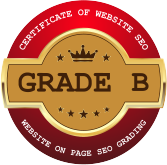Questions and Answers
i.
Describe
Napier’s Bone and Slide Rule.
Ans: Napier’s Bone:
John Napier a Scottish mathematician
invented a calculating device called
Napier’s Bone in
1614. It consisted of a wooden box containing rotating cylinders
each of which had the
digits from 0 to 9. It could multiply, divide and find square
roots. His biggest
achievement was the invention of logarithm.
Slide
Rule:
Based on the
idea of logarithm, English mathematician, William Oughtred
developed a device called Slide Rule in 1920s. it was very useful for
solving problems that involved multiplication and division. It
has three parts slide, rule and a transparent sliding cursor.
➤➤➤➤➤➤➤➤➤➤➤➤➤
ii.
Compare 1st and 3rd
generation computers.
Ans: Ist Generation Computers:
First generation use vaccum tube. It
generated so much heat that it had to be cooled by air conditioner.vaccum tube
burnt out often and it was difficult to repair and maintain it.
Features of First generation computers:
i.
They use
vaccum tube.
ii.
Slow in
speed and memory was limited.
iii.
Huge in
size and take entire room.
iv.
Consumed
more power and generated lot of heat.
v.
Input
was based on punched cards.
Example: ENIAC, UNIVAC, IBM
604, Mark I and EDSAC.
3rd Generation Computers:
Integrated circuits were
used in these computers. ICs were developed in 1960s. a single chip contains a
large number of transistors. IC chip increased the power of these computers.
Features of 3rd
Generation Computers:
i.
They used IC chips.
ii.
Computers consumed less power and generate less heat.
iii.
The ICs improved the speed and memory of these
computers.
iv.
They are more reliable than 2nd and 1st
generation computers.
v.
Keyboard and monitors were used in these computers.
Example: IBM
360, system3, Control Data Corporation’s3300 and6600 computers.
➤➤➤➤➤➤➤➤➤➤➤➤➤
iii. Differentiate between analog and digital computers.
Ans: Analog Computers:
They
represent and process data by measuring quantities such as voltage and current
to solve a problem. They work on supply of continuous signals as input and
display out put simultaneously. They are special purpose devices, designed to
perform single specific task. The accuracy is low but they are faster in speed
as compared to digital computers.
Example:
Heath Kit EC-1 an educational analog computer by USA in 1960
Digital
Computers:
They work with digits.
Everything in digital computer is represented with binary digits 0s and 1s.
they manipulates them at very fast speed. They can store and process large
amount of information at high speed. The results produce by these computers are
reliable and accurate. They are general purpose computers.
Example: IBM PCs, and Apple Macintosh
computers
➤➤➤➤➤➤➤➤➤➤➤➤➤
iv. Ahmed, a class IX student is asking his father to replace his home computer CRT monitor with LCD monitor. How will you justify his demand?
Ans: Justification:
LCDs are free from
geometric image distortions. They have uniform screen
brightness. They are flicker
free. They are smaller than CRT monitors. They also
require less energy than CRT monitors.
➤➤➤➤➤➤➤➤➤➤➤➤➤
v. What will happen if storage devices are removed from a computer?
Ans: Storage
devices are the fundamental
components of a computer. The purpose of
these devices is to store the
information and also retrieve it. If storage devices are
removed than it will be
impossible to store the information on computer.
➤➤➤➤➤➤➤➤➤➤➤➤➤
vi. Differentiate between system software and application software.
Ans:
System Software
|
Application Software
|
System
software is a collection of programs
which makes the use of computer easy and efficient.
|
Application
software is developed for computer users to solve their problems.
|
Highly
experienced computer programmers develop system software.
|
Used
to write letters, create presentations or managing database.
|
Examples:
O.S, device drivers, utility programs and language processors.
|
Example:
Productivity software, business software and education software.
|
➤➤➤➤➤➤➤➤➤➤➤➤➤
vii. How a student can use a computer to improve academic performance?
Ans: A
student can improve his academic performance by using computer in a number of
ways;
i.
Using
computer applications increases the student learning motivation.
ii.
They can
use testing application to improve their test performance.
iii.
By
surfing internet for the learning purpose they can increase their area of
study.
iv.
They can
use different case studies for their learning.
v.
They
become active in class due to awareness and updation.
➤➤➤➤➤➤➤➤➤➤➤➤➤
viii. Give any three uses of computers in a school library?
Ans: Uses of computer:
i.
Access to large amount of information.
ii.
Advance search and retrieval of information.
iii.
Access to
primary information resources.
iv.
Integration with other digital libraries.
v.
Access to global information using internet.
➤➤➤➤➤➤➤➤➤➤➤➤➤
ix. Name few house hold appliances in which microprocessor are used.
Ans: Appliances using Microprocessor:
Mobile
phones, ovens, cameras, washing machines and LEDs etc.
➤➤➤➤➤➤➤➤➤➤➤➤➤
x. What are the tasks performed by operating system?
Ans: Tasks
Performed by O.S:
a)
It loads programs into memory and executes them.
b)
It controls the
operations of I.O and storages devices.
c)
It manages files
and folders.
d)
It detects
hardware failures.
Fbise Notes-Computer | Fundamentals of Computer Short Questions
 Reviewed by fbisenotes
on
July 16, 2019
Rating:
Reviewed by fbisenotes
on
July 16, 2019
Rating:
 Reviewed by fbisenotes
on
July 16, 2019
Rating:
Reviewed by fbisenotes
on
July 16, 2019
Rating:


















very informative site keep it up, for Solved MCQs please visit and Share: solvedmcqs.blogspot.com
ReplyDeleteThanks sir 😆😆😆😆😆
DeleteVery good 😊 site keep it up
ReplyDelete